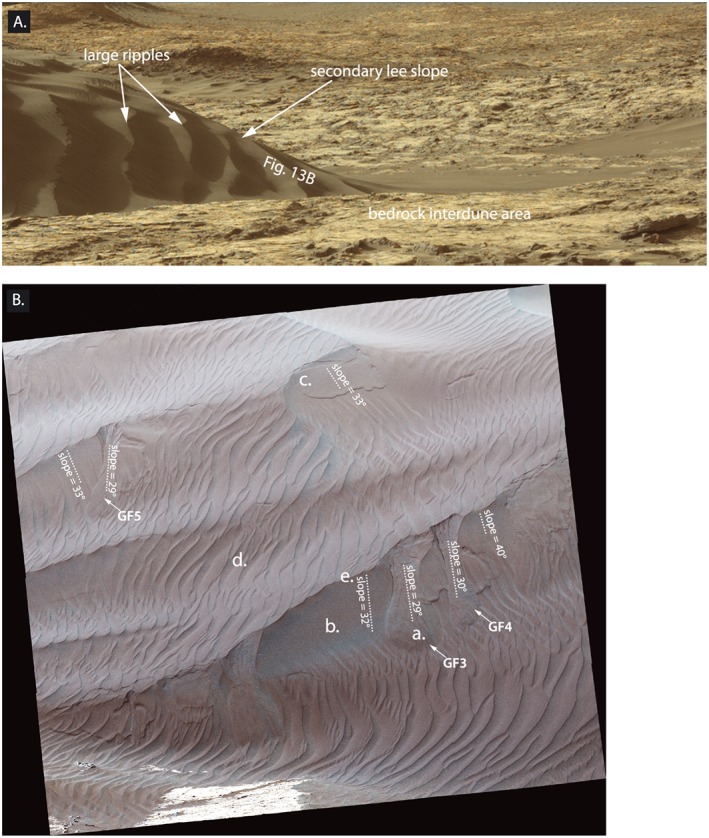Figure 13.

Mastcam images of secondary lee slope of Namib Dune. (A) Mastcam image taken from interdune area showing the large ripples migrating obliquely down the secondary lee slope toward the east‐southeast. (B) Mastcam image showing sedimentary structures on large ripples. The lowercase white letters refer to (a) grainflow, (b) grainfall, (c) fracture and slide on large‐ripple lee slope, (d) impact ripples, and (e) large‐ripple brink. Measurements from a Mastcam stereo DTM are shown on the grainflow and grainfall areas of the ripple. Note that the grainflows are consistently lower in slope than the grainfall. The grainflows are avalanching at an oblique, rather than transverse angle to the crest line. The avalanches follow the downslope direction of the combined dune and ripple slopes and may reduce the sinuosity of the large ripples [e.g., Rubin, 2012]. mcam05410, Sol 1192 (Figure 13A); mcam05418, Sol 1194 (Figure 13B).
